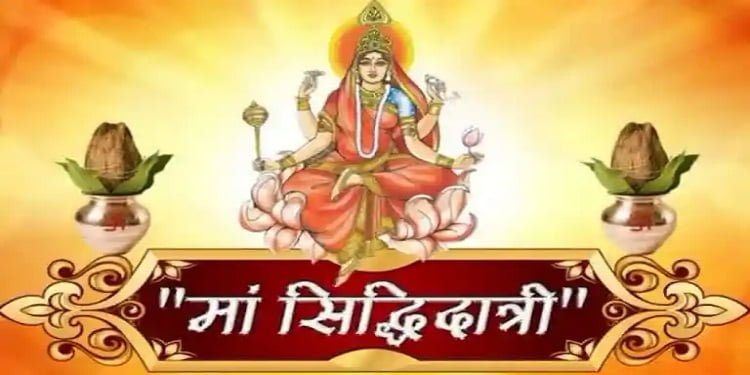Siddhidatri: The Supernatural Giver
In Hindu mythology, Siddhidatri is revered as the ninth and final form of the Navadurga, the nine aspects of the divine mother goddess Mahadevi. Her name itself carries a profound meaning – “Siddhi” refers to supernatural powers or meditative abilities, while “Dhatri” means giver or awarder. As the embodiment of these qualities, Siddhidatri is worshipped on the ninth day of Navaratri, the nine nights dedicated to the Navadurga.
Fulfilling Divine Aspirations
Devotees seek the blessings of Siddhidatri to fulfill their divine aspirations. She possesses the ability to bestow supernatural powers and grant the fulfillment of desires. It is believed that by worshipping Siddhidatri, one can attain spiritual enlightenment and gain mastery over various siddhis (supernatural powers).
The Divine Union of Lord Shiva and Siddhidatri
An intriguing aspect of Siddhidatri’s significance is her connection with Lord Shiva. It is said that one side of Lord Shiva’s body is that of Goddess Siddhidatri, symbolizing their divine union. This unique representation of Lord Shiva is also known as Ardhanarishwara, emphasizing the inseparable nature of the masculine and feminine energies in the universe.
According to Vedic scriptures, Lord Shiva himself attained all the siddhis (supernatural powers) by worshipping Siddhidatri. This highlights the immense power and importance of this goddess in the Hindu pantheon.
Worshipping Siddhidatri
During the auspicious occasion of Navaratri, devotees offer their prayers and seek the blessings of Siddhidatri. The worship of Siddhidatri involves various rituals and offerings to please the goddess and receive her divine grace.
One of the ways to worship Siddhidatri is by performing aarti, a ritual of waving a lamp in front of the deity while singing hymns and devotional songs. This act of devotion and reverence is believed to invoke the goddess’s presence and shower her blessings upon the devotees.
Another way to connect with Siddhidatri is through meditation. By focusing the mind and surrendering to her divine energy, one can experience a deep connection and receive her guidance and blessings.
Devotees also offer flowers, incense, fruits, and sweets to Siddhidatri as a gesture of gratitude and devotion. These offerings symbolize the devotee’s surrender and willingness to receive the goddess’s blessings.
Symbolism and Significance
Siddhidatri’s representation as the giver of supernatural powers holds deep symbolism. It reminds us of the potential within each individual to tap into their inner strength and achieve extraordinary feats.
Her presence in the Navadurga signifies the culmination of the divine feminine energy, representing the ultimate power and grace of the goddess. Siddhidatri’s blessings enable devotees to overcome obstacles, gain spiritual enlightenment, and attain self-realization.
Furthermore, Siddhidatri’s association with Lord Shiva signifies the harmonious balance between the masculine and feminine energies in the universe. It serves as a reminder of the interconnectedness and interdependence of these energies in creating and sustaining the world.
Conclusion
Siddhidatri, the supernatural giver, is a revered form of the Navadurga, embodying the power to bestow supernatural abilities and fulfill divine aspirations. Devotees seek her blessings during Navaratri to attain spiritual enlightenment and gain mastery over siddhis. The divine union of Lord Shiva and Siddhidatri further highlights her significance in Hindu mythology. By worshipping Siddhidatri with devotion and surrender, one can experience her divine grace and tap into their own inner potential.
